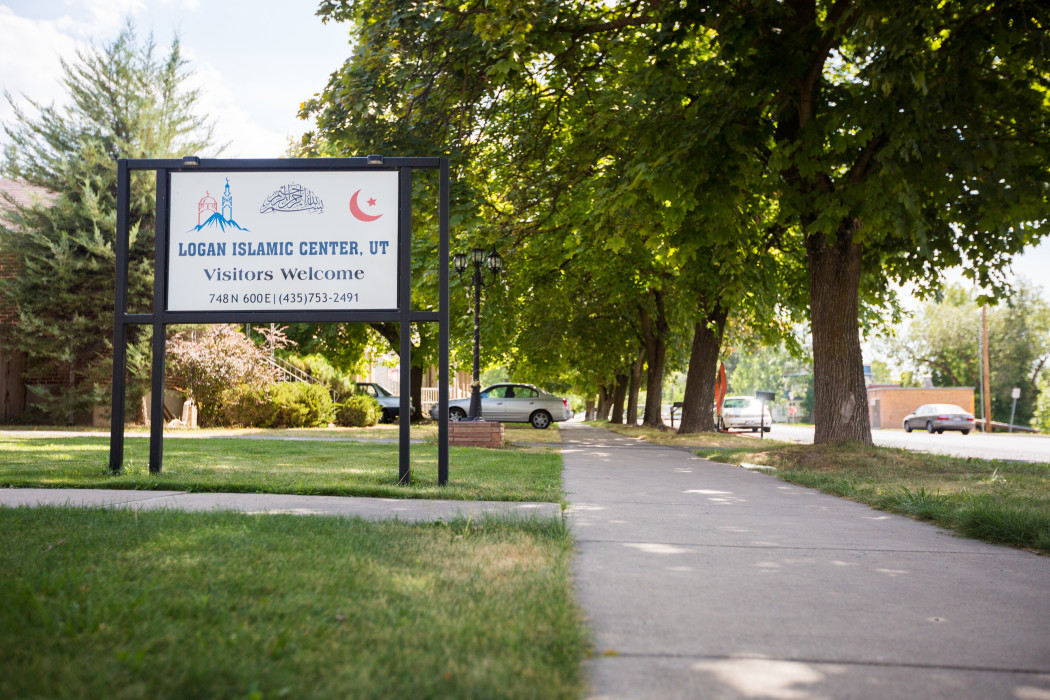Visitors welcome at the Logan Islamic Center
In a modestly furnished house known as the Islamic Center of Logan, the local Muslim community of gathers for their Friday afternoon prayer.
A sign in front of the building, located on 600 E. near the Utah State University campus, reads “Visitors Welcome” and it’s not just a formality — as I approach the center, regular worshippers kindly show me where to go and welcome me into their midst. I join a small group of women downstairs and sit with them behind brightly colored masking tape on the floor pointing us toward Mecca, Saudi Arabia. We watch a screen and listen to a translated sermon as the prayer is led by the men upstairs.
The prayer pronounces blessings upon those who are faithful — its message is one of devotion, humility, and peace. Afterward, the prayer leader gives a moment for any announcements.
Admittedly, I was expecting to visit the Islamic Center and feel welcomed, but also out of place. I had no qualms about standing out, but believed I would all the same. How might the dynamic feel praying among my foreign, ethnically diverse Muslim peers, myself being a white, Christian student from Utah? I expected the service to be vastly different from anything I experience in my church meetings and I anticipated enjoying these differences. However, what I found is that while there are many contrasts, there are also many similarities.
Among these differences is the aerobic nature of Islamic prayer. Visitors at the center participate in prayer that is physically active, involving kneeling, standing or bowing to the ground in reverence. Being accustomed to kneeling in still prayer, I enjoyed this change of pace as there is less tendency to lose focus or daydream when praying in this way.
In a conversation with senior attendee at the Islamic Center and USU student Ayman Afifi, a member of the Interfaith Council at USU he explained that while each prayer is directly out of the Qur’an, the Hadid, a collection of sayings and messages of the prophet Mohammed, “gives a detailed description of exactly how to pray. The two books are naturally separate but they complement each other.” Afifi said. The Hadid is the companion to the Qur’an and is meant to help the reader understand the Qur’an, and acts as the moral compass of Islam.
Another difference was obviously the language, as prayers on Friday afternoons are typically offered in Arabic, English, and then Arabic again so that the traditional language of Islam has the final word, said Nada Hossam, a visiting student from Egypt.
Other differences I noticed include the removal of shoes before entering the improvised mosque, women changing into their hijab to show respect, and the tape that faces toward Mecca, the center of the Islamic world.
The similarities, however, are what made me savor the experience and recognize that Afifi was right when he said, “The weekly prayer is a reminder of faith and a chance to see one another.” Worship is about connection. Connection with the divine, yes, but also with one another as human beings.
Sitting there with my new friends, I felt the same as I do visiting any religious establishment, including my own. I felt a sensation of peace and camaraderie there among the small community of about twenty-five people from over fifty different countries and backgrounds.
“People are always welcome,” Afifi said. “It’s what faith is all about: working together.”
— viviangates29@gmail.com


Correction: “the Hadid, a collection of sayings…” Should read “hadith”